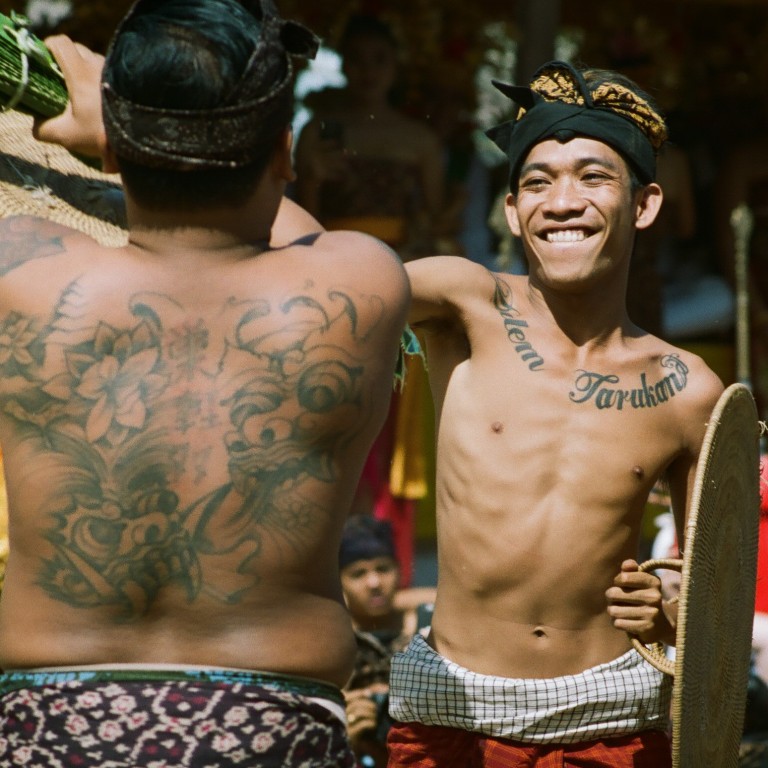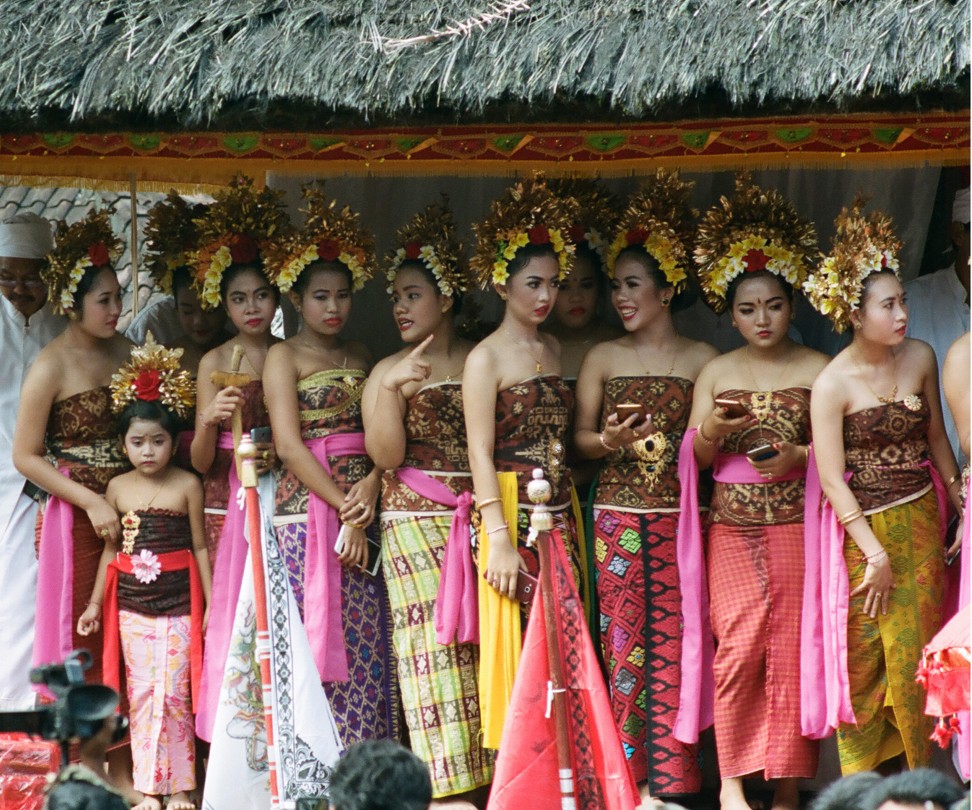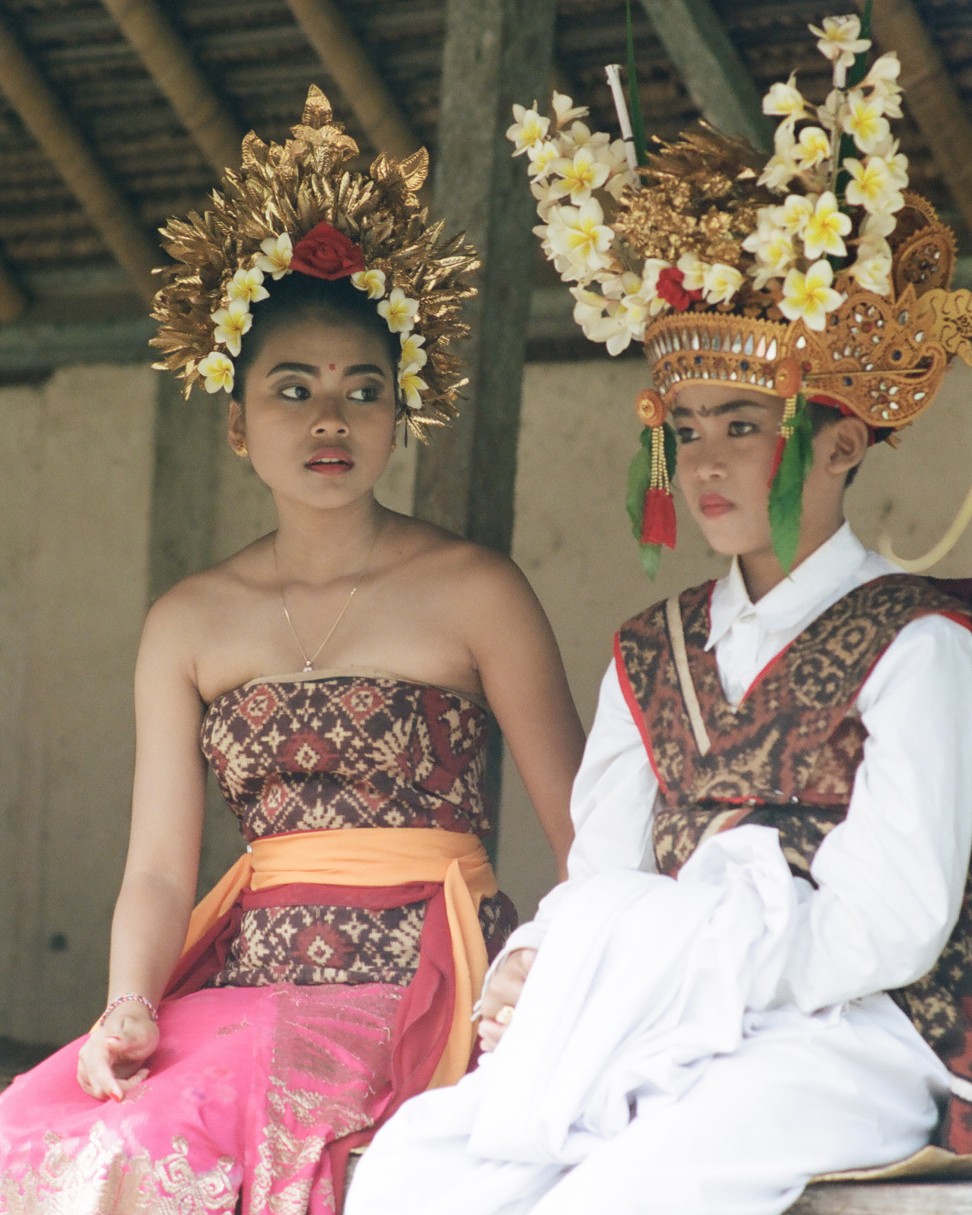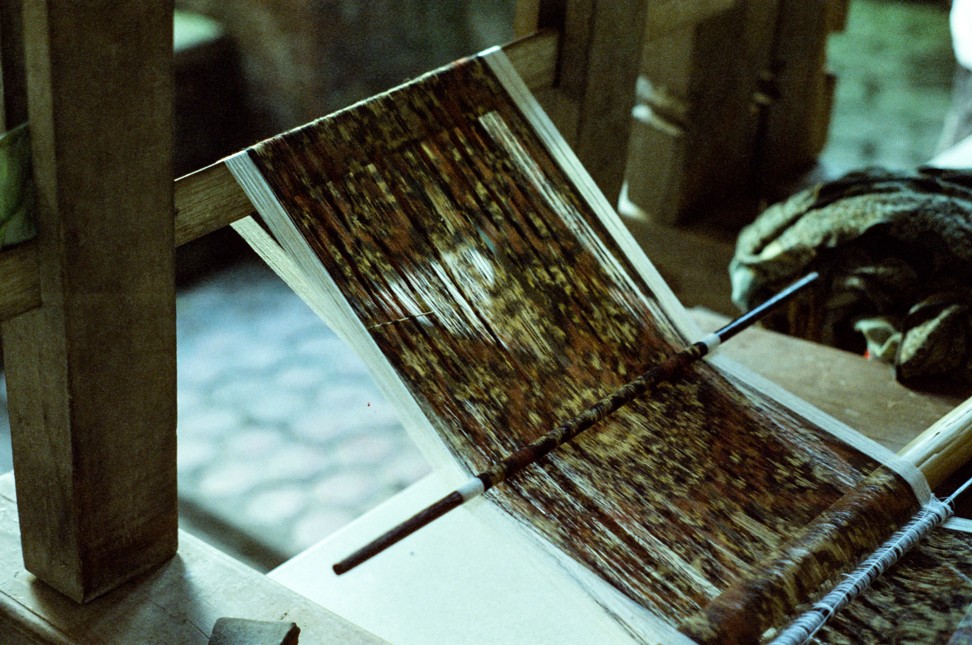
Ritual combat in the camera drone era: indigenous tribe the Bali Aga in Bali, Indonesia, keep tradition of harvest festival alive
- The Bali Aga fled Javanese invaders but today face a new invasion – of tourists curious about their lives, and ritual duels that are harvest festival highlight
- Once visitors have negotiated dagger-wearing guards, they find Tenganan village full of excitement, the palm wine flowing, as young and old ready for combat
Blood splatters onto the wooden platform from one of the 400 Bali Aga men fighting at the Makare-kare. Known abroad as the pandan wars, the ritual sees men of all ages engage in combat in honour of the war god Indra, and is the highlight of a traditional harvest festival on the Indonesian island of Bali.
“The Bali Aga are the descendants of the Bedahulu kingdom,” says Ketut Pancawan, a fifty-something-year-old member of Tenganan’s patrimonial tribal council. “After the Javanese conquest of Bali led by Gajah Mada in the 14th century, the remnants of the Bedahulu kingdom escaped deep into the interior of the island.”
The Makare-kare is one of many customs that separate the Bali Aga from the Hindu Balinese of the coast. While the Indonesian government also recognises the Bali Aga as Hindu, their animistic traditions more closely resemble those of the Sasak, a tribe on the neighbouring island of Lombok, than of most of the Balinese, who are descendants of the Javanese Majapahit empire.
Now, having fled the island’s imperial invaders and avoided the Dutch colonial yoke because of their isolation in the mountains of Bali, the Bali Aga find themselves having to adjust to another invasion – this time of tourists.

Just 15 kilometres from Mount Agung, an active volcano, Tenganan has gained popularity among tourists in recent years for its traditions and abundant natural beauty.
The grassy smell of freshly cut rice paddies fills the air as I leave Ubud, a town in the interior of the island, with three friends bound for Tenganan. The black-sand beaches of the coast give way to dense tropical rainforest and the asphalt road turns into a muddy track as we go deeper into the jungle.
Not long after our rickety Toyota passes a sign pointing towards Tenganan, three men stop us at a makeshift checkpoint, each bearing a kris, the traditional dagger of maritime Southeast Asia. We roll down the passenger window and one of the men leans his forearm on the roof of the car and, pushing his face in close, asks with a smile for a small donation to enter the village for the festival.

Usually, having three men wearing long knives stop your car in the middle of a forest road would be cause for alarm, but I spot a full jug of freshly tapped palm wine in the arms of one of the men, a grin plastered across his face. We make eye contact and he welcomes us by offering us a drink, melting whatever tension remained between us.
Everyone in the village is dressed in ceremonial attire. The men’s sarongs and the women’s breast-cloths are fashioned from geringsing, an elaborately patterned cloth in shades of rust and gold that the Bali Aga believe has talismanic powers. Sculpted gold leaves and frangipani flowers accent the headdresses worn by a few young women, who joke with boys wearing krises at the waist.
The air is thick with excitement – and incense. Fresh janur, bamboo flagpoles adorned with palm leaves and flowers, line the street leading to the arena. Over the next hour we watch as priests dressed in white bless young Bali Aga men with holy water and prayers before they ascend a wooden stage to duel.

The Makare-kare is the highlight of a larger festival called the Usaba Sambah, which occurs every fifth month of the Balinese calendar. Customarily held after harvest time, it serves as a tabuh rah (literal translation: blood offering) to honour Batara Indra, the Vedic god of war and storms, in order to ensure the success of the next crop.
There is a playful atmosphere that makes the Usaba Sambah feel more like a small-town carnival than an ancient ritual. Palm wine flows freely from a large oil drum behind the village hall, loosening social tensions as the camera shutters of tourists and locals click away and drones whirr overhead.
The combatants feint and strike at each other, fuelled by palm wine and the metallic rhythms tapped out by the gamelan selonding, a sacred orchestra of metal instruments unique to the Bali Aga. From their viewpoint at the bale banjar or village hall, young girls shoot glances at the men and boys battering each other with rattan shields and clubs made of barbed pandan leaves.

According to Pancawan, of the tribal council, the custom of marrying within the community is encouraged through a law that revokes the inheritance rights of any Tenganan villager who chooses to marry outside the village. Many Bali Aga millennials have moved outside the village to find work, but some return to Tenganan to settle down for this reason.
“If a Bali Aga man chooses to marry a girl from outside the village, he has to build his household outside the village gates,” Pancawan says. “He will no longer be allowed to partake in rituals such as the Makare-kare, and will have to relinquish his rights to inherit land and property.”
A few days later, Pancawan invites me into his house to show me a century-old geringsing woven by his grandmother. Sunlight streaking through cracks in the corrugated iron roof light up the natural dyes of the cloth, bringing reds and yellows to life.
He holds the 100-year-old heirloom up to the light. The term geringsing derives from two words: gering, meaning sick, and sing, meaning not, he says. As such, the cloth functions as a talisman against evil and sickness.

“We only wear this geringsing once or twice a year for major ceremonies like the Usaba Sambah,” says Pancawan. “You can see that the red dye has set in compared to the newer ones. That is the special thing about our geringsing, it looks better with time.
“Before the tourists came along, our only source of outside income was to sell ikat textiles – woven using threads dyed with a pattern while still on the loom – and other crafts to neighbouring villages.”
Now tourists’ money is everywhere in Tenganan, and craft sales are just one of many streams of income. Weaving classes run by housewives rely on TripAdvisor ratings posted on their front doors to attract customers, while local guides lead treks tours through the nearby forest. Even beekeepers and palm wine tappers have leveraged the tourist trade to boost household businesses.
While modernisation will inevitably determine how Tenganan’s economy interacts with the outside world, the village’s strict tribal customs dictate a clear path to preserving its identity for years to come.

Far from being an anachronism, the Usaba Sambah is a celebration of Tenganan’s heritage. It is at once a village carnival, a tourist attraction, and an ancient ritual – a cultural artefact passed down among Bali Aga families much like the geringsing.
Sitting on his porch with his family’s century-old textile piece draped over his shoulder, Pancawan smiles when I ask him whether he is concerned about the commercialisation of his culture. “Back when I was young there was a family that sold their heirloom geringsing to a European tourist,” he says. “We did not have much back then, but we know better now. You cannot put a price on tradition.”

Getting there: Tenganan is in the Karangasem regency in East Bali. It is recommended visitors hire a local guide, as road conditions can get rough and many smaller paths are not shown on Google Maps. The Usaba Sambah festival falls from late June to July.
Staying there: Local homestays provide basic accommodation for tourists. There are also plenty of options in the neighbouring town of Candi Dasa.
